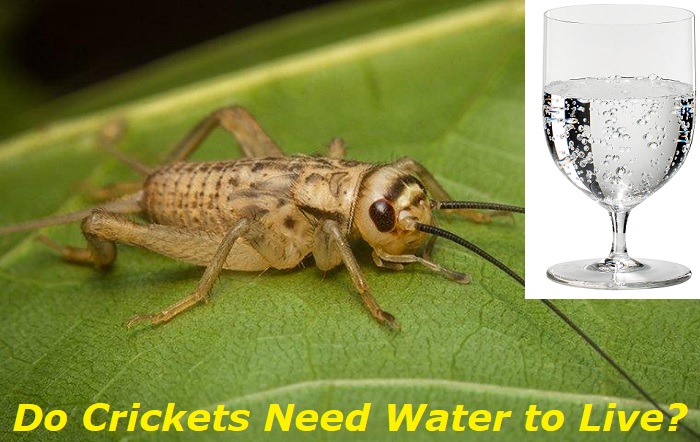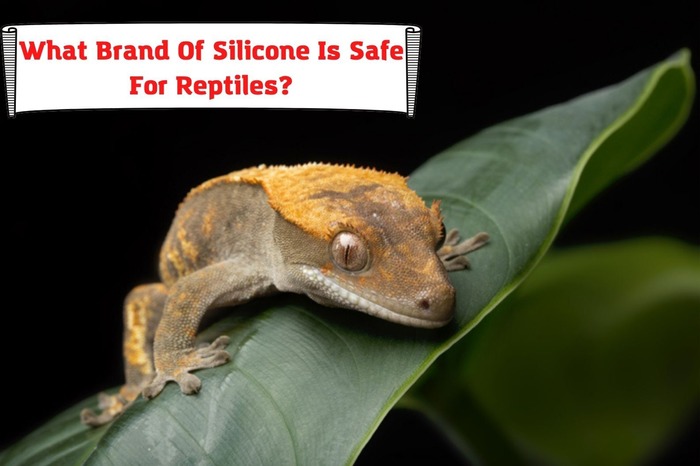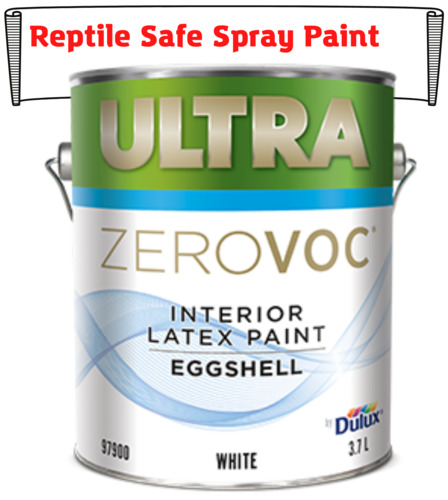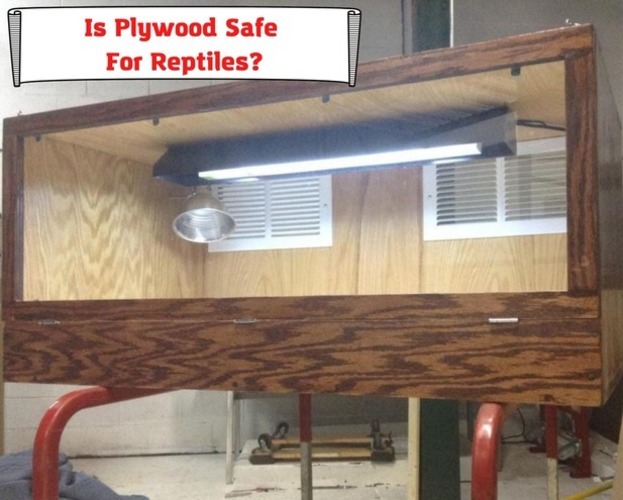Crickets are fascinating insects with many benefits, especially for owners of pets that use them as feeder insects. These chirping insects are high in protein. They are about 58% percent protein per bug!
But you may wonder if crickets drink water.

This article answers the question. You will also find answers to other important concerns, such as:
- How much water to provide for your crickets
- How to provide water for your crickets
- How often to change the water.
Do Crickets Drink Water?
Yes, crickets drink water. In the wild, crickets stay hydrated by sucking from high moisture-content fruits and other food choices. They also suck on dew droplets that they find on leaves while foraging.
If you own a cricket farm, the same applies.
You want to provide your crickets with a separate water source even though they may have access to high moisture-content foods.
Water availability is very important. Failing to provide water for your crickets is one of the fastest ways to kill them.
But you also want to be very cautious with how you provide water. You do not want to have them in a pool of standing water.
If you leave a water bowl in the enclosure, you can be sure that your crickets will drown.
There are several ways to provide water for your crickets, and these will be highlighted below.
How Do I Provide Water for Crickets?
Keeping your cricket hydrated is a must. Unlike roaches that need occasional misting and many other means of hydration, keeping crickets hydrated is pretty straightforward.
Here are a few ways to achieve that.
1) Feed Them High Moisture-Content Fruits and Vegetables
One of the most common ways to do this is by feeding them high moisture-content foods. You can feed them fruits like pineapples, melons, and peaches.
Not all moisture-content foods are safe for crickets. The smell of some fruits repels them. One prominent example is citrus. Lemon has been used as a repellent to get rid of crickets. They hate the smell of lemon and will look for a way to leave the container if you introduce lemon.
But they will do well with other citrus fruits like orange.
You can also feed them vegetables like tomatoes, potatoes, lettuce, and other leafy greens. Feeding them specific foods to pass the nutrients to your beardies or other critters is known as gut loading.
2) Use a Cricket Waterer and Sponge or Cotton Balls
It is fine to feed your crickets with foods that have a high moisture content. But the importance of making available a separate water source at all times requires a more direct approach.
To prevent the chances of drowning, you can imitate nature’s way of providing water by using cricket waterers and sponges or cotton balls.
A cricket waterer is a device you can use to provide water for your crickets. It is a reservoir that usually comes with a sponge. You fill up the reservoir with water and screw it to the base.
After screwing it to the base, push the sponge into the base while ensuring it makes contact with the bottle holes where the water is supposed to leak.
It is recommended that you rinse the sponge through and refill the bottle with clean filtered water every 3-5 days. Placing the waterer and the base on a level surface will prevent an overflow.
You can also use cotton balls. This has been one of the fastest and most efficient ways to provide water for crickets. Spray the water on the cotton balls and place them in the cricket container. It would be best to regularly mist the cotton balls soaking wet and change them every 48-72 hours.
This will prevent the chances of mold build-up and other unsanitary conditions.
These devices are better than a bowl of water placed in a cricket container. Crickets are known for drowning even in a small pool of water. With these devices, they will suck the moisture out of the wet sponge or crystal ball, and they will not drown.
Keep the water device in the container with them.
If you provide water with a dish, ensure that the texture of the dish is rough enough for the crickets to crawl out. Adding a few pebbles into the dish to help the crickets get around for a drink without getting soaked and drowned in the dish is an excellent idea.
You want to limit this option to larger crickets. It is less likely to work for smaller crickets.
How Much Water Can Crickets Drink?
Crickets consume a lot of water in warm weather for their size. An 18–20-gallon tank housing around crickets or more can consume as much as 500ml per week and more!
In warm conditions, the metabolism rate is high, which increases the rate of water consumption.
Another factor that influences how much water your crickets drink is the size of your critters. Large and medium-sized crickets tend to consume more water than the nymphs.
What to Note About Providing Water for Your Crickets?
There is a lot to be watchful for when providing water for your crickets. But the most important is the quality of water you are giving.
There is a significant risk in using the tap water as is. It usually contains chemicals: chlorine and chloramine are common disinfectants that are used to treat the tap water.
Sometimes, they may change the concentration of these chemicals depending on various factors. It would be best to filter the water. You want to serve your crickets only filtered water.
If you are running a cricket farm, this will save you from losing your cricket farm because of a simple change in the concentration of chemicals in the water.
Another important thing to note is how often you must change or wash the sponge in the waterer. The generally recommended time is 72 hours. You want to thoroughly wash the sponge every 72 hours to prevent mold build-up.
But washing and rinsing the sponge every 24-48 hours would be best. Microbes can reproduce in only a matter of minutes. In colder temperatures, the rate at which they replicate is slower, about a new cell every hour.
So, waiting 72 hours to change the sponge is risky. Changing it more frequently is better.
If you use cotton balls, there is no need to rinse and return the balls. It would be best to replace them every 24-48 hours.
How Long Can Crickets Go Without Water?
Once they become adults, crickets have a lifespan of about 8-10 weeks. Adult crickets can survive without food and water for up to 14 days.
But starving them of food and water will have negative consequences for your cricket container. Crickets are cannibals and will eat each other if food and water become scarce.
Younger crickets cannot last up to 14 days without food. But they can live up to 5 days. Some may even live up to 7 days. Crickets at the larvae stage are the weakest. They will typically not last beyond 72 hours without food and water.
Some Secrets from Their Life
Perhaps the first thing to note about crickets is that these orthopteran insects do not have nostrils and lungs. This is why they will drown in a tiny pool of water.
They cannot breathe like other animals with lungs.
They carry out respiratory functions with the help of spiracles. The spiracles are several tiny holes lined by the body of the crickets. This is why it would be hard for the cricket to breathe if it landed in a puddle of water.
The water would block its spiracles, making it impossible to breathe. This will eventually lead to its death.
Another secret that might interest you is that some cricket species can play dead! Can you believe that?
Crickets play dead when a predator is lurking around. They stop moving and remain motionless even when they are hanging upside down.
They do this to avoid becoming the net meal of a predator. In the wild, crickets under threat will typically escape into crevices and remain motionless until the predator loses interest and goes away.
Final Thoughts
Crickets drink water. That is a fact of life. Although they can get hydrated when they consume foods with high moisture content, it would be best to provide them with a separate water source. You also want this separate water source to be readily available at all times.
If you feed them foods with high moisture content, it would be ideal also to provide them with dry food sources. It is better to ensure that they also get clean water in addition to the high moisture content foods that you provide them.
And most importantly, remember that they breathe with their spirals. Keeping a water bowl without pebbles in them for easy movement will ultimately lead to death as they will drown in the bowl. It is better to keep to the other safer means of hydration.
- Dubia Roach Egg Sack: How To Understand if It’s Healthy? - January 2, 2023
- How To Feed African Dwarf Frog While on Vacation? - December 26, 2022
- Baytril for Bearded Dragon: Here’s What You Should Know - December 19, 2022



